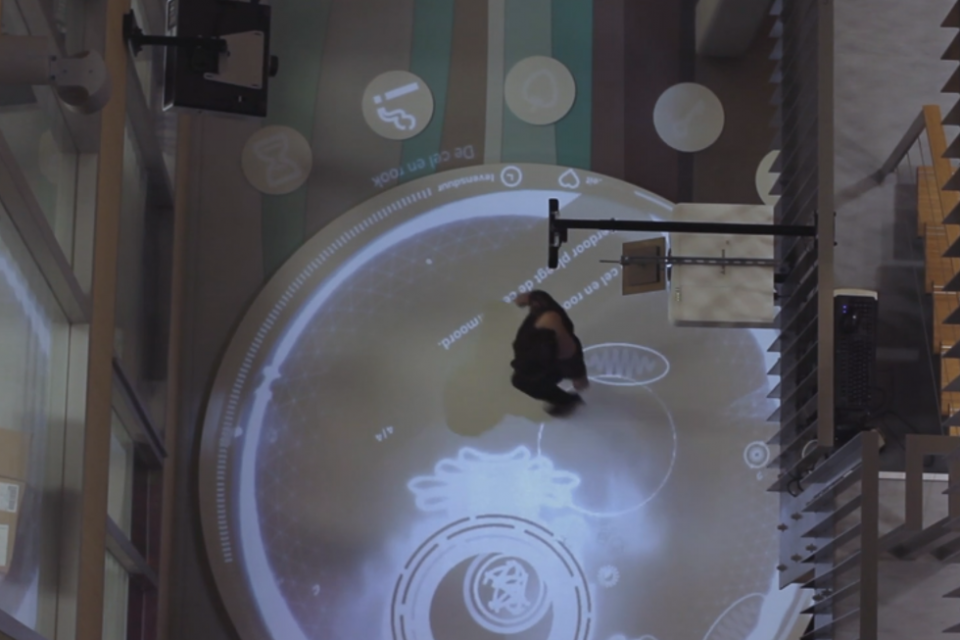Interactive installations can serve a variety of purposes, they can even transport us into some of the tiniest (yet complex) structural forms: cells.
Intricate processes such as aging cells can be hard to grasp and visualize, yet that’s exactly what the studio CleverFranke in the Netherlands set out to do. Their Living Cell installation not only serves educational purposes, it is a tribute to genomic research. The installation presents acquired insights about the human genome in a very playful manner for everyone to enjoy and learn.
Take a closer look at their project and our exclusive interview with the co-founder Thomas Clever:
Living cell – interactive installation – Short docu from CLEVER FRANKE on Vimeo
Microsoft (MS): Tell us a little bit about yourself.
Thomas Clever (TC): My name is Thomas Clever, co-founder of CLEVER°FRANKE, an interactive design agency focused on information and data visualization. Our team consists of designers and developers so combining design and technology is in our nature.
MS: How do you think digital tools are shaping the work of contemporary artists?
TC: The way I see it is that the digital realm is the tool itself. Internet, programming languages and algorithms are in essence the tools that we use to create new work. Programming or coding shifted from being very pragmatic/functional to a more creative process. Creative coding has become an art form on itself. It inspires and evolves the work, by experimenting with different variables and parameters. Having said this, it is important as a designer/artist to invest time into the creating your own aesthetics and avoid the default aesthetics of such languages.
MS: What was the starting point for Living Cell?
TC: We work for many clients in the field of science and especially in Genetics and we wanted to initiate a project that communicates their research to a larger audience. We came up with the idea of projecting a huge human cell and enable the audience to literally ‘set’ into the cell. We pitched our idea of a ‘Living Cell’ it to one of our clients – ERIBA (European Research Institute for the Biology of Ageing) – and they were very excited. The Living Cell delivers, by means of interactive visualization, a tribute to the miraculous genomics research and the recent discoveries made by ERIBA. This installation shows the various components and processes of a human cell and makes it accessible to everyone.
MS: Is this the first time you used Kinect for your work?
TC: Yes it was. We needed a way for the visitor to interact with the components in the cell. The Kinect turned out the deliver the best results.
MS: Have you tried other kinds of media before going into digital art?
TC: Not really. Some of our digital work finds it way to a printed medium but as an interactive design agency, the digital realm is where our passion lies.
![Genomics2_Thumb[1]](https://news.microsoft.com/wp-content/uploads//2015/03/Genomics2_Thumb1.png)
MS: Are you planning on doing other works with Kinect in the near future?
TC: We’ve used the Kinect in another project since then. We built a scanner that takes 3D pictures of people. This is then rendered in a certain pattern. The tool was part of a new identity we designed for one of our clients.
MS: If you could have dinner with any visual artist (dead or alive) who would it be and why?
TC: We would love to have dinner digital artist Aaron Koblin. He combines technology and personal experience in such a way that his work really comes alive when people start to ‘use’ it; there is a kind of synergy.




